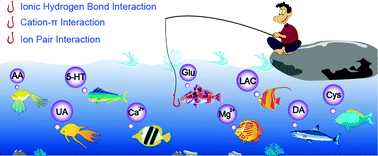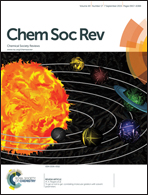Tuning interionic interaction for highly selective in vivo analysis
Abstract
The development of highly selective methodologies to enable in vivo recording of chemical signals is of great importance for studying brain functions and brain activity mapping. However, the complexity of cerebral systems presents a great challenge in the development of chem/(bio)sensors that are capable of directly and selectively recording bioactive molecules involved in brain functions. As one of the most important and popular interactions in nature, interionic interaction constitutes the chemical essence of high specificity in natural systems, which inspires us to develop highly selective chem/(bio)sensors for in vivo analysis by precisely engineering interionic interaction in the in vivo sensing system. In this tutorial review, we focus on the recent progress in the tuning of interionic interaction to improve the selectivity of biosensors for in vivo analysis. The type and property of the interionic interaction is first introduced and several strategies to improve the selectivity of the biosensors, including enzyme-based electrochemical biosensors, aptamer-based electrochemical biosensors, and the strategies to recruit recognition molecules are reviewed. We also present an overview of the potential applications of the biosensors for in vivo analysis and thereby for physiological investigations. Finally, we present the major challenges and opportunities regarding the high selectivity of in vivo analysis based on tuning interionic interaction. We believe that this tutorial review provides critical insights for highly selective in vivo analysis and offers new concepts and strategies to understand brain chemistry.


 Please wait while we load your content...
Please wait while we load your content...